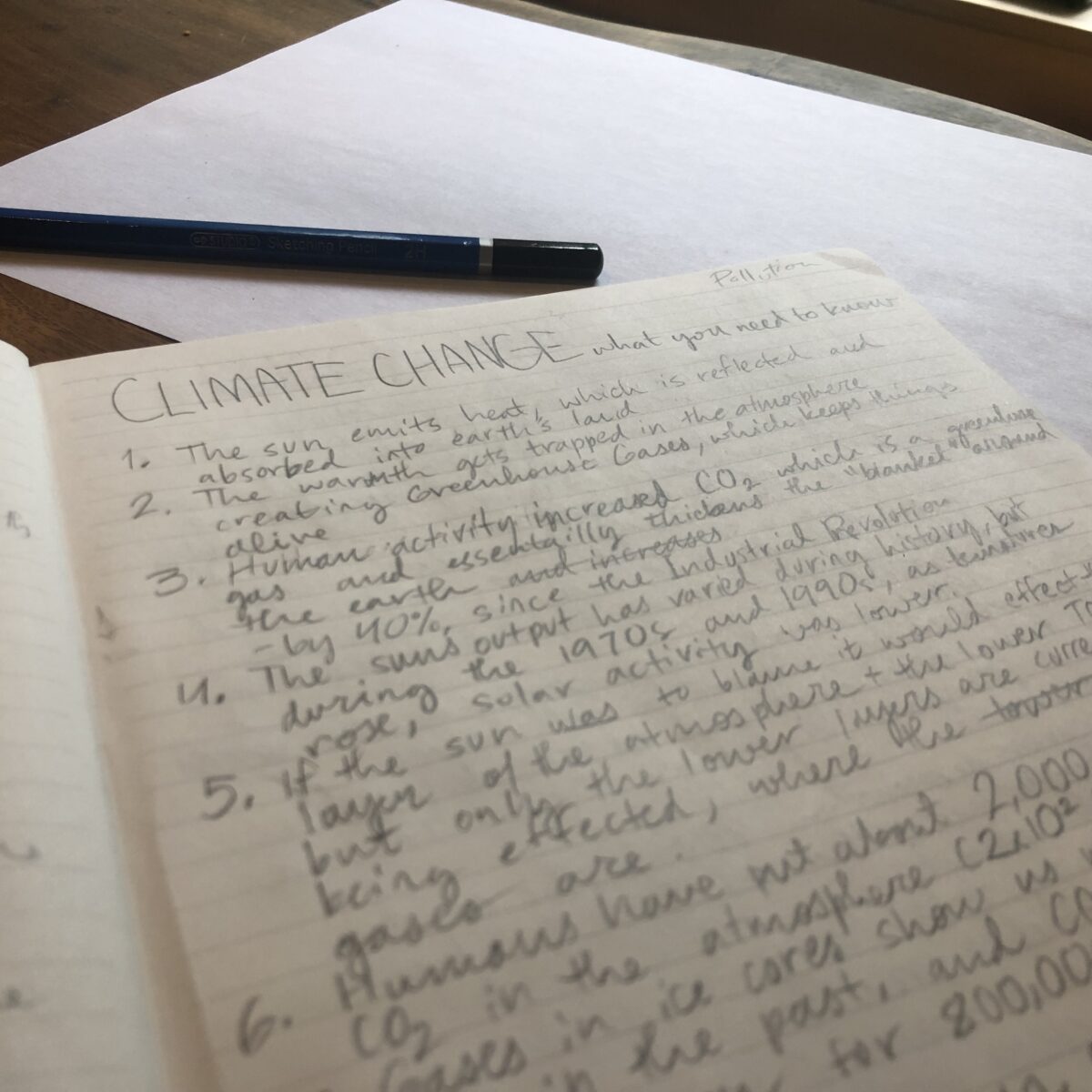Ready to start your journey of environmental education? Begin with this great video!
Climate Science: What You NEED To Know
Watch this amazing video by PBS Digital Studios’ “BeSmart,” narrated by Joe Hanson, that clearly breaks down and makes comprehensible every step of climate change while debunking common myths. The kind teacher who recommended it to me said, “This is a video to memorize,” and, frankly, I agree! But first, here’s the breakdown:
- The sun emits heat, which is reflected and absorbed into the land on earth.
- The warmth gets trapped in the atmosphere, creating greenhouse gasses, which is like a warm blanket that keeps everything alive.
- Human activity increased CO2 (carbon dioxide, a greenhouse gas) even more, which essentially thickens the natural “blanket” around the earth, like using a too-thick quilt in summer; since the Industrial Revolution, which started about 1760, it has increased the heat by 40%.
- (If you think the output of the sun has anything to do with it:) Solar output varies during history, but during the 1970s and 1990s, as temperatures rose, solar activity was lower.
- If the sun was to blame, it would effect the upper layers and the lower layers of the atmosphere together—but, during the earth’s current heat-up, only the lower layers, where the greenhouse gases are, are being effected.
- Humans have put out about 2,000 gigatons of CO2 in the atmosphere (2,000,000,000,000 tons!) since the 1870s.
- Gases in ice core samples (here‘s a video on how they do it) show us what things were like in the past—and that CO2 levels are the highest they’ve been for 800,000 years (before humans existed).
- Earth is warming 10 times faster than at the end of the ice age.
- What kinds of isotopes/carbon are in the atmosphere will tell us if it’s our doing, rather than a natural phenomenon. Fossil fuels use carbon from ancient plants that used C12 (a certain type of carbon) and would release a higher C12 to C13 ratio of carbon into the atmosphere. We’re finding higher C12 in the atmosphere now.
- Why it’s not volcanic activity: Volcanoes only admit about 1% as much CO2 as us. They couldn’t manage to release that much into the atmosphere.
- Normally carbon’s balanced between the atmosphere, plants, and animals, (as carbon is one of the basic building blocks of life and energy) but eliminating carbon sinks released centuries worth in a few years.
- Agriculture, which kickstarted human development, is also part of the problem: Methane is increasing from farm animals and nitrous oxide from fertilizers.
- If we run simulations just using natural causes of climate change, they predict no change or even cooling in the 20th century.
- It’s still going to get cold in some places, but in the 2000s there were two times as many record highs as record lows. And each of the past 3 decades has been warmer than any other decade since we started measuring in the 1850s.
- Since 1900, natural temperatures around the world have increased by almost a full degree.
- Data from tree rings and ice cores tells us the past 30 years were probably the warmest in centuries.
- Oceans cover more than 70% of the Earth and absorb more than 90% of the heat added to the planet. (Not in a good way—it causes the earth to stay even warmer in something called a positive feedback loop.)
- Oceans are rising a tenth of an inch per year (that may not seem like a lot, but it makes a big difference on islands, coasts, and during storms and flooding) and are up 8 inches since 1901.
- Water expands as it warms (like steam) adding to the rise in sea levels.
- Ice sheets, glaciers, and water that’s on frozen land melt into the ocean.
- The oceans are the world’s largest carbon sink. As more CO2 enters the atmosphere, more dissolves into the ocean which makes it more acidic (and less habitable for marine life).
- Animals with calcium shells are super sensitive to pH (acidity) levels—and we’re on course for oceans to hit pH 7.8 in 100 years which could wipe out ⅓ of ocean species.
- Levels of summer sea ice in the arctic have decreased by 40% since 1978, which might be the lowest levels in 1400 years.
- The white sea ice usually reflects the sun’s energy but the dark ocean soaks it up and causes a positive feedback loop where the earth keeps getting warmer and warmer.
Keep in mind that it is from 2014, and may contain inaccuracies due to age.
This is a great video to share with your family and friends! Pause to keep up with the quick pace, turn on closed captions, and show them this article to follow along with!
